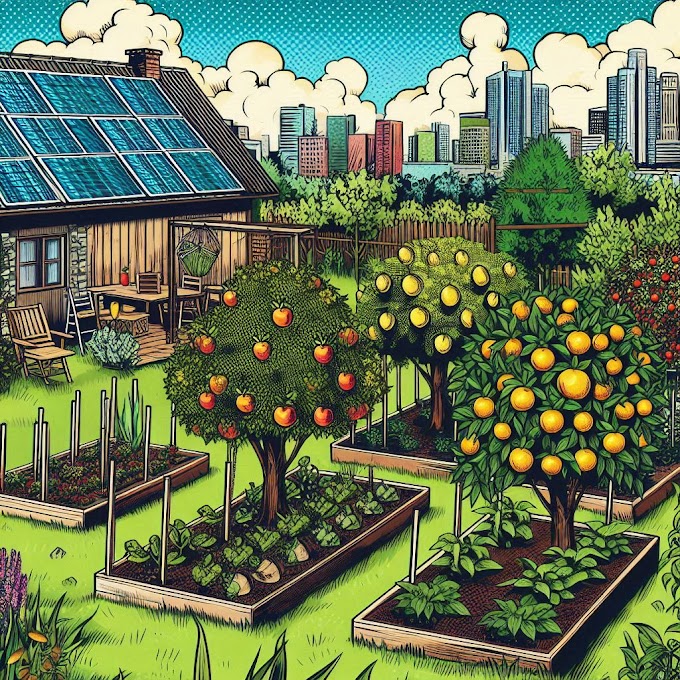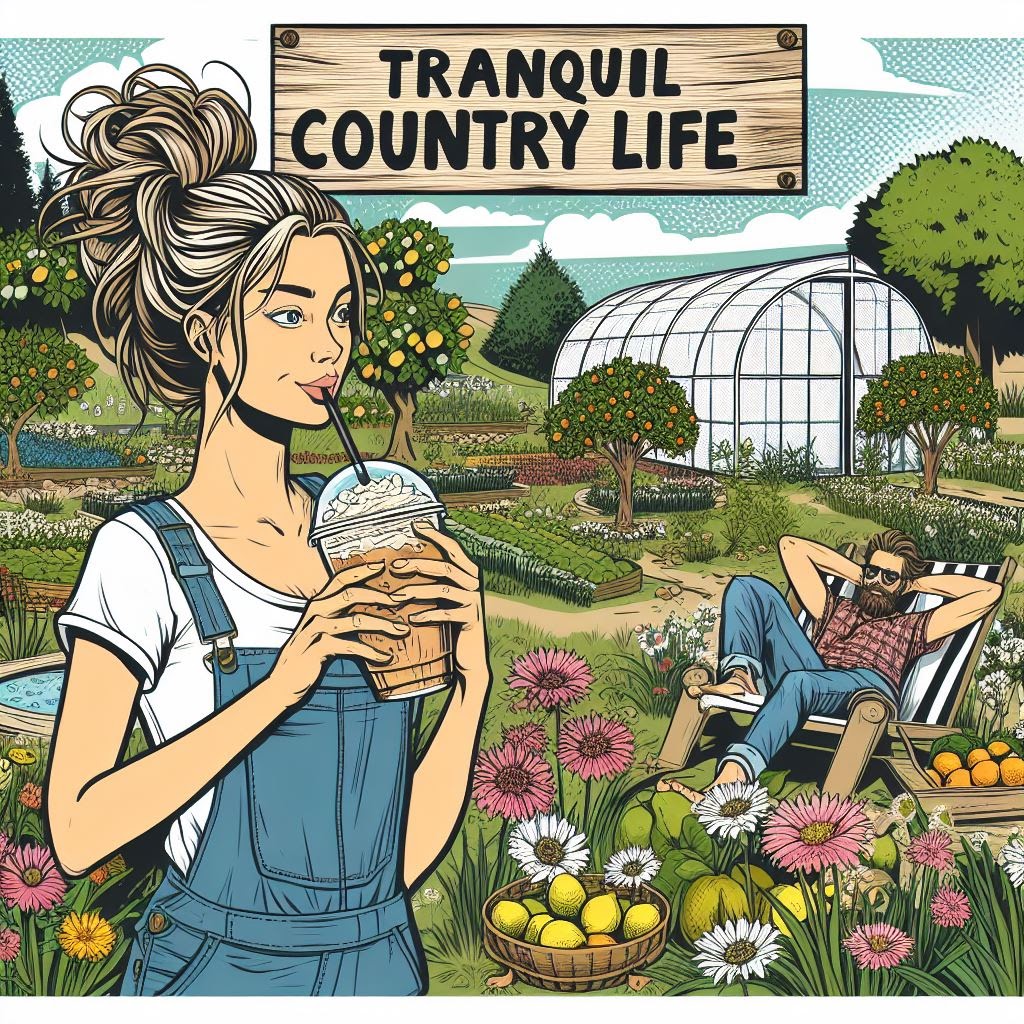Berries: A Nutrient-Packed, Easy-to-Grow Survival Fruit
Berries are some of the best fruits to grow in a survival garden. They’re low-maintenance, highly nutritious, and can be easily incorporated into a variety of meals or preserved for future use. Whether you’re growing strawberries, raspberries, blackberries, or blueberries, these fruits are a lifesaver in terms of nutrition, taste, and survival preparedness.
Why Grow Berries?
Rich in Nutrients: Berries are packed with essential vitamins (especially Vitamin C), antioxidants, fiber, and other beneficial compounds. They help boost the immune system, fight inflammation, and support overall health.
Versatile for Survival: Berries can be eaten fresh, dried, or frozen, making them an adaptable food source. They can be used in smoothies, jams, baked goods, salads, or even eaten alone as a snack.
High in Fiber: The fiber content in berries promotes digestive health and helps keep you feeling full longer, which is valuable in a survival situation.
Low Maintenance: Berries, especially varieties like raspberries and blackberries, require little attention once they’re established. They’re hardy, disease-resistant, and can often grow in a range of climates.
Types of Berries to Grow in Your Survival Garden
Strawberries:
Why: Strawberries are easy to grow, highly productive, and versatile in the kitchen. They’re perfect for both fresh eating and preservation.
How to Grow: Strawberries thrive in full sun, and they grow well in containers, hanging baskets, or garden beds. They like well-drained soil rich in organic matter.
Harvesting: Harvest strawberries when they are fully ripe. Picking them too early will result in sour fruit.
Raspberries:
Why: Raspberries are packed with fiber, antioxidants, and vitamin C. They’re perfect for making preserves, pies, or eaten fresh.
How to Grow: Raspberries grow best in well-drained, slightly acidic soil. Plant them in a sunny location with good air circulation to prevent disease. Raspberries are perennial, meaning they come back year after year.
Harvesting: Raspberries are ready to harvest when the fruit easily separates from the plant. They ripen quickly, so it’s important to check them often.
Blackberries:
Why: Blackberries are rich in vitamin C, fiber, and antioxidants. They’re also high in calories, making them an excellent addition to a survival garden.
How to Grow: Blackberries grow best in full sun with well-drained soil. Like raspberries, they are perennial. Make sure to prune the canes to keep them manageable.
Harvesting: Blackberries should be picked when they are plump and dark purple/black. They can be easily eaten fresh or preserved for later.
Blueberries:
Why: Blueberries are packed with antioxidants, especially anthocyanins, which help fight free radicals in the body. They also contain fiber, which is great for digestive health.
How to Grow: Blueberries require acidic soil with a pH of 4.5 to 5.5, so you may need to amend your soil with sulfur or compost to ensure the right pH. They also prefer full sun.
Harvesting: Blueberries are ready to harvest when they turn a deep blue color. Harvest them gently, as they bruise easily.
When to Plant Berries
Best Planting Time:
Strawberries: Early spring for a summer harvest or late fall for a spring harvest.
Raspberries and Blackberries: Early spring or late fall, before the last frost of the season.
Blueberries: Late fall or early spring, depending on your region.
Growing Timeframe:
Strawberries typically yield fruit in their first year, while raspberries, blackberries, and blueberries take 1-2 years to establish before producing a significant crop.
Where to Grow Berries
Location:
All berries thrive in full sun, so choose a sunny spot for your berry plants. They also benefit from some protection from harsh winds, which can damage delicate fruit.
Soil:
Berries like slightly acidic, well-drained soil rich in organic matter. They don’t tolerate standing water, so make sure your soil is well-draining to avoid root rot.
How to Grow Berries
1. Planting:
Space your berry plants properly to avoid overcrowding, allowing good air circulation to reduce the risk of disease. Strawberry plants should be spaced 12-18 inches apart, while raspberries, blackberries, and blueberries should be spaced 3-5 feet apart, depending on the variety.
2. Watering:
Keep the soil evenly moist, but not soggy. Berries require regular watering, especially during dry spells. However, overwatering can lead to root rot.
3. Mulching:
Mulch around your berry plants to retain moisture, suppress weeds, and protect the roots during temperature fluctuations. Organic mulches, like straw or wood chips, work well.
4. Pruning:
Prune dead or damaged canes to encourage new growth. For raspberries and blackberries, pruning helps to manage the plants and improve yields. Blueberries also benefit from annual pruning to remove older, less productive wood.
5. Fertilizing:
Berries don’t require heavy fertilization. A light application of compost or organic fertilizer in early spring can help boost growth. Avoid over-fertilizing, as it can lead to excessive foliage growth with fewer berries.
Benefits of Berries in a Survival Garden
Immune-Boosting: Berries are high in Vitamin C and antioxidants, making them essential for boosting the immune system, especially in times of stress or illness.
Easy to Grow: Berries are well-suited for a variety of climates and soil types. With proper care, they are hardy and low-maintenance, ensuring a consistent food supply.
Storage Potential: Berries can be preserved by freezing, drying, or canning, making them a long-lasting food source.
Culinary Variety: Berries add sweetness and flavor to your meals. Use them in everything from smoothies and desserts to savory dishes like salads or roasted meats.
Culinary Uses of Berries 🍲
Fresh Eating: Enjoy berries fresh off the bush for a quick snack or add them to your daily diet for a nutrient boost.
Jams and Jellies: Make homemade jams or jellies to preserve your berries for the winter months. This is an excellent way to stockpile fruit in times of abundance.
Baked Goods: Add berries to muffins, pies, cakes, and bread for a burst of flavor and nutrients.
Smoothies and Juices: Blend berries into smoothies or juices for a refreshing, nutritious drink.
Salads: Add fresh berries to salads for a sweet and tangy contrast to savory greens.
Sauces and Salsas: Cook down berries to make flavorful sauces or salsas to pair with meats, grains, or vegetables.
Growing Tips 🌿
Support Structures: For raspberries and blackberries, consider using a trellis or support structure to keep the plants upright and manageable. This also prevents the fruit from touching the ground and getting damaged.
Companion Planting: Berries benefit from being planted with other plants that enhance their growth. For instance, planting strawberries near spinach or lettuce can improve soil conditions and make efficient use of space.
Pest Control: Watch for common pests such as aphids, slugs, and birds that may be attracted to your berries. Use organic methods like neem oil, garlic spray, or physical barriers (like netting) to keep pests at bay.
Harvesting and Storing Berries
Harvesting:
Berries are best harvested when they are fully ripe, as they won’t continue to ripen after being picked. Gently pick the berries to avoid bruising them. You may need to harvest in stages as not all the fruit will ripen at the same time.
Storage:
Fresh berries should be eaten or stored within a few days. To preserve them for longer periods, freeze them, dry them, or make jams and jellies.
Why Berries Are Essential for Your Survival Garden
Berries are an invaluable addition to your survival garden because they are easy to grow, high in nutrients, and provide a versatile, long-lasting food source.
From fresh eating to storage for future use, berries are an essential part of a well-rounded survival food plan.
Their antioxidant-rich, immune-boosting properties make them a powerful ally in staying healthy, even in the most challenging times.
So, plant a berry patch in your survival garden, and enjoy the sweet rewards of nature’s most nutritious fruits!












